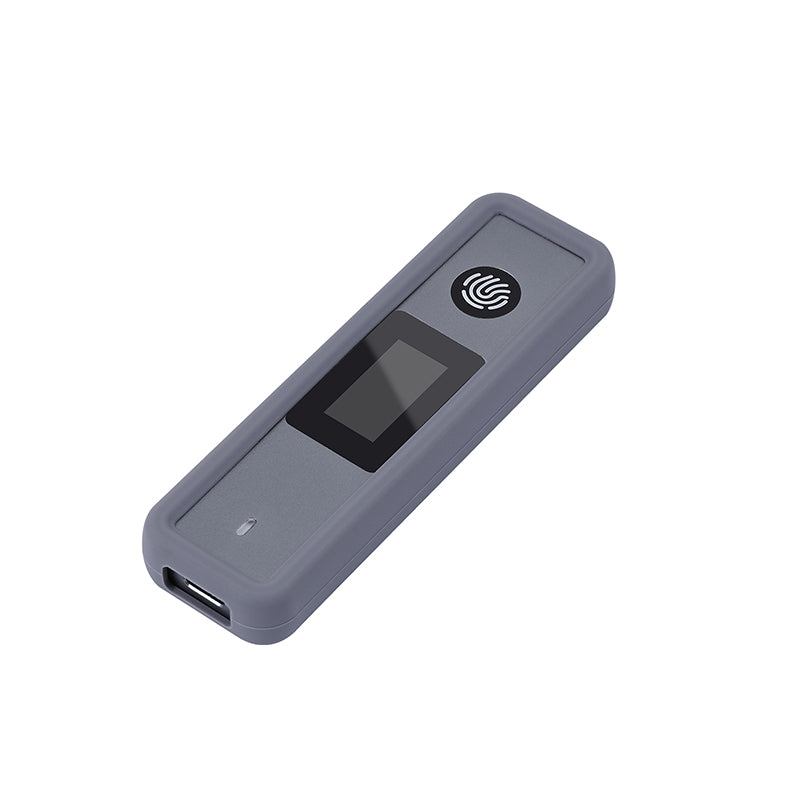
Share
Introduction: Why MacBook Users Should Care About External Display Connections
Apple's MacBook lineup, known for its sleek design and powerful performance, often features a minimalist approach to ports—primarily offering Thunderbolt/USB-C interfaces.This design choice necessitates the use of adapters or specific cables to connect external displays.The method you choose to connect your MacBook to an external monitor can significantly impact display quality, refresh rates, and multi-monitor setups.
This guide aims to demystify the differences between Thunderbolt 4 to DisplayPort cables and standard USB-C to DisplayPort cables, helping you make an informed decision for your setup.
1. Understanding the Basics: Thunderbolt 4 vs. USB-C (DisplayPort Alt Mode)
USB-C (DisplayPort Alt Mode):
- Functionality:Utilizes the DisplayPort Alternate Mode to transmit video signals.
- Bandwidth:Supports up to DisplayPort 1.4 with a maximum bandwidth of 32.4Gbps.
- Limitations:Cannot simultaneously deliver maximum-speed data and video; suitable for single-screen setups and general office tasks.

Thunderbolt 4:
- Enhanced Capabilities:While sharing the USB-C connector, Thunderbolt 4 offers a bandwidth of 40Gbps.
- Versatility:Supports simultaneous transmission of DisplayPort 1.4 video, PCIe data, USB 3.2, and power delivery.
- Ideal Use Cases:High-refresh-rate displays (e.g., 144Hz), multi-monitor configurations, and tasks requiring precise color accuracy.
2. Performance Comparison: Thunderbolt 4 to DisplayPort vs. USB-C to DisplayPort
|
Feature |
Thunderbolt 4 to DisplayPort |
USB-C to DisplayPort |
|
Max Resolution/Refresh Rate |
8K@60Hz / 4K@144Hz (DP 2.0 compatible) |
4K@60Hz (DP 1.4 limitation) |
|
Multi-Monitor Support |
Supports daisy-chaining multiple displays |
Typically limited to single display |
|
Data Transfer |
Maintains full 40Gbps bandwidth |
Shared bandwidth may reduce performance |
|
Compatibility |
Broad compatibility with DP monitors |
May experience instability with some setups |
|
Price Range |
Approximately $50–$100 |
Approximately $20–$50 |
Real-World Testing:
- Setup:M1/M2 MacBook Air connected to a 4K@120Hz monitor.
- Thunderbolt 4 to DisplayPort:Achieved stable output with no stuttering.
- USB-C to DisplayPort:Limited to 4K@60Hz; attempts at higher refresh rates resulted in a black screen.
3. Specific Needs of MacBook Users: Multi-Display Workflows & Color Precision
Multi-Display Productivity:
- Thunderbolt 4:Enables daisy-chaining multiple monitors through a single port, reducing cable clutter and maximizing workspace efficiency.
- USB-C to DisplayPort:Often requires additional docks or adapters for multi-monitor setups, potentially increasing CPU load and complexity.

Color Accuracy for Creatives:
- Thunderbolt 4:Delivers uncompressed DisplayPort signals, ensuring accurate color representation essential for tasks involving wide color gamuts like P3 or DCI-P3.
- USB-C to DisplayPort:May introduce compression due to bandwidth limitations, potentially affecting color depth and accuracy.
4. Recommendations: Choosing the Right Adapter for Your Needs
Opt for Thunderbolt 4 to DisplayPort if:
- You require high refresh rates (≥120Hz), multi-monitor setups, or professional-grade color accuracy.
- Recommended Cable:Belkin Thunderbolt 4 to DisplayPort Cable, known for its certified compatibility and performance.
Consider USB-C to DisplayPort if:
- Your needs are limited to standard office tasks with a single 4K@60Hz monitor.
- Recommended Cable:Cable Matters USB-C to DisplayPort Cable, certified for DP 1.4.
Avoid Common Pitfalls:
- Steer clear of uncertified or low-quality cables, which may lead to display issues or limited performance.
- Ensure your MacBook's ports support the necessary modes (look for DP or Thunderbolt symbols).
5. Frequently Asked Questions (FAQ)
Q1: Can I connect a high-refresh-rate monitor to my MacBook with only USB-C ports?
- A:Yes, but it's essential to verify that your MacBook supports DisplayPort 1.4. For M1/M2 models, using a Thunderbolt 4 to DisplayPort cable is recommended to achieve higher refresh rates.
Q2: Why does my USB-C to DisplayPort connection only output at 30Hz?
- A:This issue often arises from using cables or adapters that default to HDMI 1.4 mode. Switching to a certified DP 1.4 cable can resolve this limitation.
Q3: Is a Thunderbolt 4 to DisplayPort cable compatible with non-Apple monitors?
- A:Yes, as long as the monitor supports DisplayPort 1.4 or 2.0 standards.
Q4: Can I use a Thunderbolt 4 to DisplayPort cable with a USB-C port?
- A:While physically compatible, the performance will be limited to the specifications of the USB-C port, potentially restricting bandwidth and features.
Q5: How can I ensure optimal performance with a USB-C to DisplayPort cable?
- A:Use a high-quality, certified cable and confirm that both your MacBook and monitor support the desired resolution and refresh rate.
Conclusion: Small Cable Choice, Significant Impact
Selecting the appropriate cable for connecting your MacBook to an external display is crucial for achieving the desired performance and visual quality.
- Thunderbolt 4 to DisplayPort:Ideal for users requiring high refresh rates, multiple monitors, or precise color accuracy.
- USB-C to DisplayPort:Sufficient for standard office tasks and single-monitor setups at 4K@60Hz.
We'd love to hear from you:Which cable have you chosen for your setup, and how has it impacted your workflow? Share your experiences in the comments below!

